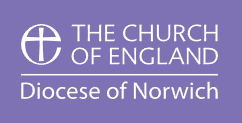When that distinguished art historian, Tim Knox (Keeper of the Royal Collections) wrote his guide to this church in 2005 he described the many changes there over the centuries. For more than 600 years it was a Roman Catholic church with an accumulation of embellishments that gained momentum during the 15th century under the counter-reformation movement – perhaps with dedication crosses and emblems of the stations of the Cross on the inside walls; a rood cross and crucifix to induce piety; statues and other imagery of the BVM and the saints to encourage prayerfulness; a perpetual light over the altar and so on. Nearly all of that was swept away when the English Church split from Rome in the 1530s. Yet Roman Catholics continued to live in Gunton; even in Gunton Hall as recorded by the authorities who kept a close eye on them. In the early 1700s the church was still basically a Catholic building. By then the new manorial family lived in close support and even intimacy with their Protestant Hanoverian rulers. When a Catholic prince of the House of Stuart invaded England with an army in 1715, Gunton proudly exhibited a ‘Royal Arms Board’ with that date on it, proclaiming where the focus of their Protestant faith and loyalty was. For many years the Board was hidden away in the Vestry.
In 1757, Gunton was amalgamated with the ecclesiastical parish of Hanworth. Its church bells were sold off. The priest moved out of the ancient parsonage near Gunton Bridge and it eventually it was demolished. In 1767, after 160 years of neglect the old medieval church of Gunton was no longer fit for purpose so the diocese permitted its demolition. For a short time there was a plan to make a domestic chapel in the middle space of the Hall. The idea was dropped after the size of the household grew and daily services were moved to the much larger Servants Hall. The new building remained a parish church and not a private chapel. The first service was held there on Easter Day 1769.
Astonishingly it was designed more like a non-conformist chapel than a traditional country church. The austere building looks like a Roman temple with no outward signs of religion. The inside was intended to be an ‘auditory’ chamber where the congregation looked east, focussing on the priest in a three-decker pulpit. The giving of Holy Communion was rare and a small altar had to be brought in especially for that purpose. There were simple rows of pews – the box pews at the east end were probably reserved for the manorial family.
Only a single Hatchment was reintroduced from the old church, though one of the nicer memorials from the north wall of the old chancel was relocated on the outside east wall. The ‘Chapel’ (as it has always been called) was the master-piece of the famous Scottish architect, Robert Adam but not all the visitors at that time were appreciative – they were clearly shocked at what they saw. Some later architect-historians said the Chapel was more of a garden feature than a ‘real’ church. Others even dismissed it as unworthy of notice. It has only been recognised as a Grade 1, national treasure in recent decades.
The loft above the entrance lobby was probably intended for a choir rather than for the manorial family. They hung more of their colourful hatchments high on the walls but their other memorials are sparse and modest.
1826, an austere, Greek-revival style organ-case and organ were installed by Thomas Robinson of London. For a long time it had to be hand pumped.1894, the Victorians found Adam’s internal arrangement uncomfortable and old fashioned. The old pulpit was removed, cut down and partly retained as a desk at the side for the preacher. Under the influence of the Anglo-Catholic ‘Tractarian Movement’, the seating was changed so that it faced inwards towards the central aisle, in the style of an ancient college chapel.
The east end was redesigned as a quasi-chancel and sanctuary in a ritualistic style so it could become a ‘high church’. Their floors were raised up with steps in three stages and covered with Green Connemara marble inset with pieces of dark green Tinos marble. Handsome field-panelling separated by four composite Corinthian wooden capitals was placed against the end walls. An altar table was made fixed and vested (ie covered) with a decorative frontal.
With pews facing north and south, the congregation had to face each other and they didn’t like it so the fittings again had to be re-arranged. 1918, Charles, the 6th Baron Suffield changed the pews so they looked east
again. He also placed a bas-relief memorial portrait of his mother Cecilia, at the back. This is the only one of its kind in the Chapel. His wife Evelyn then placed a copy of Raphael’s painting of the Holy family behind the altar further adding to the Anglo-Catholic feeling of the Chapel.
By this date the church-cum-chapel had gone almost in a full circle to become an Anglo-Catholic place of regular worship but that ended in in 1976 when there was a serious roof leak causing the ceiling to collapse. The cost of repairing it was beyond the resources of the congregation so the Chapel was declared redundant. A year later it was vested in the Norfolk Churches Trust but it is still open for occasion services and concerts. In the meantime, regular services are held in the joint Parish Church of St Bartholomew, Hanworth as advertised on the church notice boards and in this magazine.
